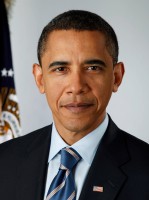
This post is an excerpt from the CRS report “Armed Conflict in Syria: US and International Response,” and is the third post in our series “#Syriasly” which examines the conflict from a variety of perspectives. This week, we outline the US’s response to date. Check out our previous posts from a Syrian-American activist’s perspective and an overview of the conflict.
Since March 2011, U.S. unilateral and multilateral policy initiatives toward the Syrian civil war have sought to stop the violence, push for the departure of President Asad, and begin a political transition to a more democratic form of government. During the conflict’s initial phase, when President Asad met non-violent civil protest with repressive force, the Administration denounced the regime’s violent measures, expanded existing U.S. sanctions on Syrian government officials, and insisted that the government enact substantive political reforms to meet protestor demands. After President Asad continued his strategy of violently suppressing dissent while refusing to resign, the Administration called for Asad’s resignation in August 2011. For the next year, U.S. officials attempted to work multilaterally through the United Nations to sanction the regime, reach a cease-fire, and endorse a political transition plan. All of these efforts were stymied by Russian and Chinese rejections of such proposals at the Security Council and unabated violence on the ground inside Syria.
After a year of conflict and without any consensus at the United Nations Security Council on approaches to end the violence, President Obama continued to pursue primarily non-military approaches toward the civil war. The White House continued to reject calls for unilateral U.S. military intervention or lethal support to rebel forces. However, during the summer of 2012, reports of alleged Asad regime preparation of munitions with chemical agents led President Obama to remark that the movement or use of such agents would constitute a “red line” and cause him to change his calculus.
With international attempts having failed at the baseline goal of bringing about a durable ceasefire, U.S. officials focused more intently on unifying the Syrian opposition. From September 2012 to February 2013, U.S. policy concentrated heavily on helping lay the foundation for a more unified political and armed opposition that could serve as a recipient of potentially greater U.S. and international support. The United States also took preliminary steps to support the defense of states bordering Syria, such as Turkey and Jordan, with the deployment of Patriot missile batteries to the former and small contingents of U.S. military personnel to the latter.
By the spring of 2013, as the death toll from the conflict had surpassed 70,000 and refugee outflows had reached over a million Syrians, the United States expanded humanitarian aid to U.N. agencies and neighboring states while providing limited, non-lethal assistance to the newly formed Syrian Opposition Coalition. By April 2013, reports that the Administration may be considering lethal assistance also surfaced. Meanwhile, in May 2013, the United States and Russia agreed to jointly work toward convening a peace conference in Geneva in the hopes of bringing Syrian combatants to the negotiating table. However, the lifting of the European arms embargo, reports of new Russian weapons shipments, Hezbollah’s acknowledgement of its involvement in the conflict, and indications of continued infighting among opposition groups cast some doubt on the likelihood of successful negotiations.
The June 2013 confirmation by U.S. intelligence of limited chemical weapons use appears to have created a new inflection point. In the words of White House officials, “The President has said that the use of chemical weapons would change his calculus, and it has.” Congress and the Administration may now debate a new direction in U.S. policy as Syria’s war drags on.[Update: This report was published on June 13, and since then President Obama has decided to provide arms to the Syrian opposition.]
For a timeline of US policy toward Syria as well as a discussion of future policy options, read the full report.
